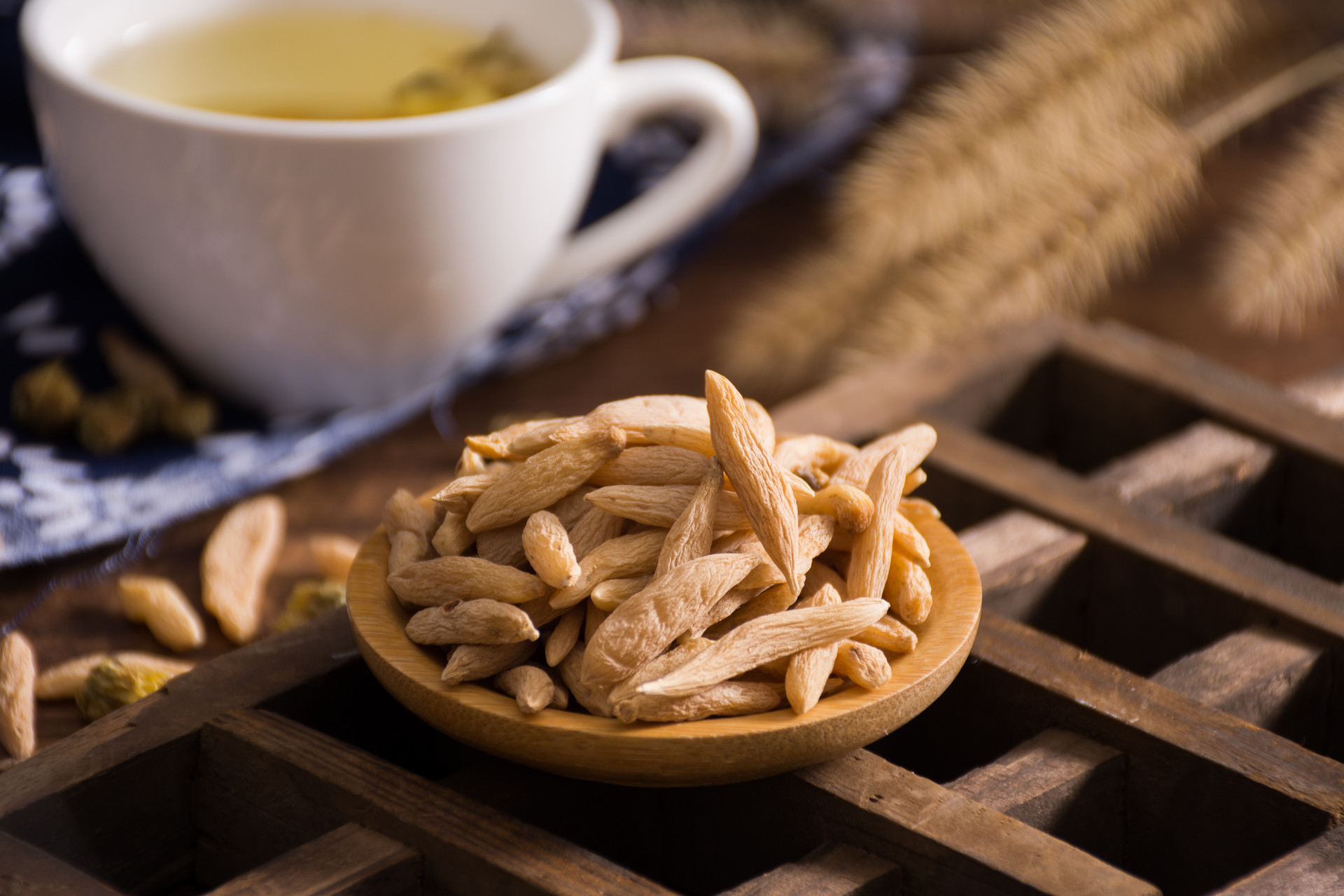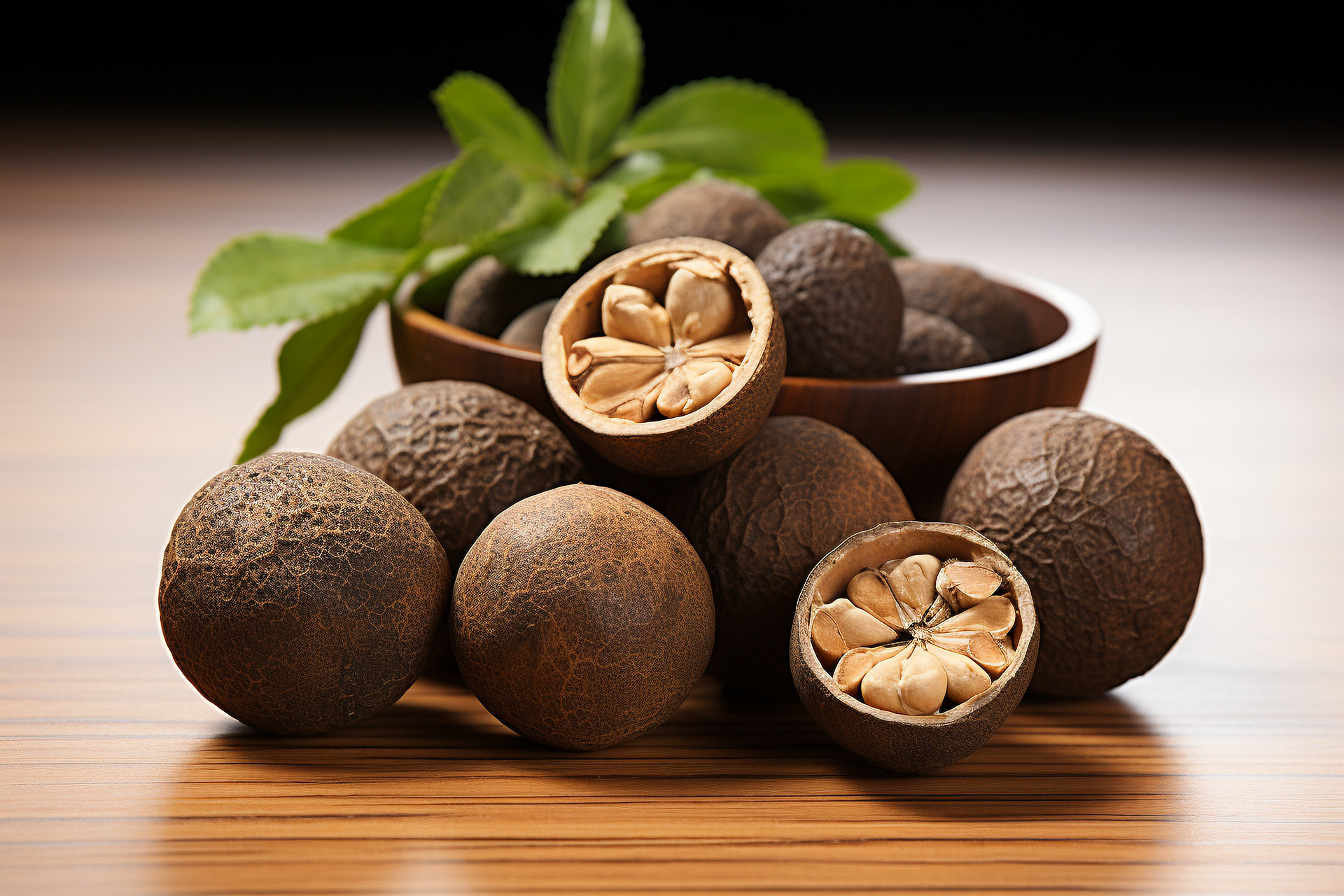In the variety of goji berries, there is a type called black goji berry, which is mainly produced in the Qaidam Basin in Qinghai Province. It grows in the desert zone at an altitude of 2800 to 3000 meters. With high altitude, dry climate, good ecological environment, and no pollution, it has higher nutritional value than red goji berries. According to measurement, black goji berries contain higher levels of vitamins and fats than red goji berries. They also contain anthocyanins, 17 amino acids, 13 trace elements, and higher levels of calcium, magnesium, copper, zinc, and iron compared to red goji berries. Due to its high nutritional value and scarce resources, some unscrupulous merchants dye white thorns, blueberries, or similar fruits to counterfeit black goji berries. Therefore, it is important to be cautious when purchasing and using black goji berries.
Authentic Black Goji Berries
They have an oval or spindle shape, with a black-red color and irregular wrinkles on the surface. When fresh black goji berries are crushed, there are about ten small seeds inside, which are flat and kidney-shaped. When dried, the fruit can stand up with the stem facing upwards. After removing the stem, there is a round, white circle. When completely dried, it can be easily crushed into powder. When soaked in water, the color of the fruit is initially black-red and more vibrant. With the release of anthocyanins, the color gradually becomes lighter. If soaked for a long time, black goji berries will turn into a translucent bluish-white color. Additionally, the appearance can vary in different water qualities. For example, soaking in acidic water (mineral water) will turn them purple, while soaking in alkaline water (spring water) will turn them blue.
Fake Black Goji Berries
1. White thorns disguised as black goji berries: The fruit of white thorns is oval-shaped, with a diameter of about 5 millimeters, similar in size to soybeans. When the fruit is ripe, it starts off as red and gradually turns into black-red or orange-yellow. The surface is smooth and plump, resembling miniature tomatoes. In the Shaanxi, Gansu, and Inner Mongolia regions, it is also known as "sour fat." When soaked in water, the color is lighter. When cut open, there is only one very hard seed inside.
2. Blueberries disguised as black goji berries: Small blueberries are deseeded and dried to imitate black goji berries. The fruit is nearly round, with a blue surface covered in a layer of white powdery substance. After drying, it becomes black-blue in color. The flesh is delicate, and the seeds are very small. It has a pleasant fragrance. The color of the water is also lighter when soaked.
Modern pharmacological research has confirmed that long-term consumption of wild black goji berries can nourish the kidneys and essence, generate fluids and relieve thirst, lower cholesterol, nourish blood and calm the mind, improve sleep, moisten the lungs and relieve cough, enhance immune function, delay aging, and promote beauty. Moreover, the anthocyanins extracted from black goji berries can penetrate into cells, protecting the brain and nerves from oxidation and preventing damage from harmful chemicals and toxins. It can also alleviate symptoms such as excessive thirst, increased appetite, and weight loss in diabetic patients. Counterfeit black goji berries do not possess the various benefits of authentic black goji berries and should not be used as substitutes.
In addition, genuine black goji berries, especially those growing in the wild, are precious resources with limited production and higher prices. They can cost at least 2,000 yuan per kilogram, while counterfeit black goji berries often cost less than 100 yuan per kilogram. If you come across black goji berries with excessively low prices, be cautious as they may be counterfeit. It is advisable to make purchases with caution.











